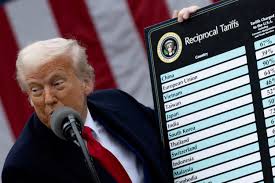Understanding the Impact of Trump Tariffs on Global Trade

Introduction
In an era where global trade is interconnected more than ever, the tariffs imposed during Donald Trump’s presidency have had significant implications. Tariffs, which are taxes applied to imports, are designed to protect domestic industries from foreign competition. The importance of understanding Trump tariffs lies not only in their immediate economic effects but also in how they have reshaped America’s trade relationships and influenced global markets.
The Imposition of Trump Tariffs
In the wake of the 2016 presidential election, President Trump initiated a series of tariffs primarily aimed at China, citing unfair trade practices and intellectual property theft. Starting in 2018, the Trump administration implemented tariffs on billions of dollars’ worth of Chinese goods, ranging from steel and aluminum to consumer electronics. This move was part of a broader strategy to reduce the U.S. trade deficit and encourage American manufacturing. By mid-2019, the tariffs had risen to 25% on various Chinese imports, escalating tensions between the two nations.
Domestic Reactions and Economic Impact
The response to these tariffs was mixed within the United States. While some American industries, particularly steel and aluminum manufacturers, thrived under the protective measures, others, such as agriculture, faced significant challenges. Farmers found their products subject to retaliatory tariffs, particularly from China, leading to a sharp decline in exports. In 2020, the U.S. government provided over $28 billion in aid to farmers affected by the trade war.
Beyond industry-specific impacts, economists warned that tariffs could result in higher prices for consumers, as companies often pass on the costs of tariffs to buyers. A 2020 study estimated that tariffs imposed under the Trump administration cost the average American household approximately $831 annually.
Global Implications and Future Outlook
Internationally, Trump tariffs have reverberated through global supply chains. Countries reliant on exports to the U.S., particularly in Asia and Europe, adjusted their economic policies in response to the changing dynamics. The tariffs also led to a re-evaluation of trade agreements, culminating in the signing of the United States-Mexico-Canada Agreement (USMCA) in 2020, which replaced NAFTA and sought to create a more favorable balance for American workers.
As the Biden administration takes office, there is ongoing debate regarding the future of these tariffs. Analysts predict that while some tariffs may remain in place due to lingering concerns over China, there might be shifts toward negotiation and collaboration rather than confrontation. The broader implication is that the approach to tariffs will continue to evolve, affecting global trade policies and international relations.
Conclusion
The impact of Trump tariffs symbolizes a significant chapter in U.S. trade policy, revealing the complexities of globalization and economic nationalism. As businesses and policymakers adapt to a changing landscape, it remains crucial for consumers and industry stakeholders to stay informed about the repercussions of trade policies. Understanding the ramifications of tariffs will be essential in anticipating future trends in global trade and the economy.









